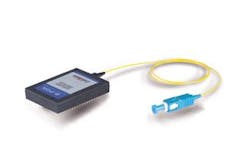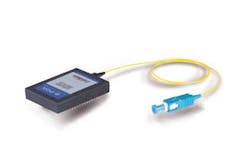Vendors vie for position in emerging North American PON transceivers market
August 11, 2004 Nashua, NH -- The United States today ranks as the second largest fiber-to-the-premise (FTTP) market, thanks in no small part to the joint request for proposal (RFP) issued last summer by the RBOC trio of Verizon, BellSouth, and SBC. With Verizon maintaining that it will pass 1 million homes this year and BellSouth and SBC unveiling their own aggressive plans, the market for passive-optical-network (PON) transceivers is heating up. Who will be the top suppliers? The answer may surprise you, reports News Editor Meghan Fuller.
Today, the biggest suppliers are coming from Asia--for two reasons, explains Daryl Inniss, program director of optical components at market researcher RHK Inc. (San
Francisco). The first and obvious reason: The bulk of the market is currently in Asia or, more specifically, Japan. According to RHK, Japan's major incumbent carrier, NTT, claims roughly 1 million fiber-to-the-home (FTTH) subscribers, with take rates as high as 80,000 per month. About 40% of those subscribers receive services via PON.
However, says Inniss, "because the big market is in Japan, you would expect the Japanese players to be the big suppliers; they are very strong in optical components. But, in fact, what is happening is the market is being supplied to a large extent by companies outside of Japan."
The two companies supplying the lion's share of transceivers and optical sub-assemblies to the Japanese market are Lightron (Daejon, Korea) and Delta Electronics (Taipei, Taiwan). The prices for PON transceivers have been set so extraordinarily low, says Inniss, it is difficult to make money on the devices.
"Some companies decided not to play," he reports, "and others tried, but the prices they tried to charge were too high and their bids were not accepted. Having a
company or companies in low cost regions that are able to get components cheap and then supply [transceivers] at very low prices--those are necessary conditions. That's one reason why these companies outside of both Japan and North America have been successful in the market."
Of course, this does not necessarily mean that Lightron and Delta Electronics will be able to parlay their success in the Japanese PON transceivers market into the emerging North American market. While PON components and modules will also be expected to hit stringent price points in the United States, this market also requires more complex equipment. In Japan, two-wavelength PON systems are the norm, but in the United States, the RBOCs have settled on a three-wavelength system, which places additional burdens on the optical network terminal (ONT) transceiver. It must
support three wavelengths: two downstream at 1490 and 1550 nm (the latter for RF broadcast video) and one upstream at 1310 nm. Sophisticated burst-mode electronics are required to enable the ONT transceivers to communicate with the optical line terminal (OLT) transceiver in the central office.
The companies that have the best chance for success are "the bigger companies, maybe North American companies, maybe companies that have demonstrated that they have the wherewithal to evolve a design to meet the evolving requirements of the system," notes Inniss. "Whether Delta can do that or Lightron can do that--and maybe they can--but because they don't have the track record of doing those kinds of things, they may not necessarily be a frontrunner. The companies that are winning now may not necessarily be the ones that win in North America," he adds.
Among those vendors angling for a piece of the North American PON transceivers market are Broadlight Inc. (Mountain View, CA), EMCORE Corp. (Somerset, NJ),
LuminentOIC (Chatsworth, CA), and Finisar Corp. (Sunnyvale, CA), thanks to its recent acquisition of Infineon Technologies' Fiber Optics Business Unit. The key to this market is meeting stringent price points--as low as $100 for optical line terminal (OLT) transceivers and $30 for the ONT transceivers. And any company that can meet these prices with a good quality product could be a contender.
According to Lee Johnson, vice president of marketing at Ortel (Alhambra, CA), a division of EMCORE, changing the optical technology within the triplexer will be one way to lower costs. Today, most triplexers feature a bulk optics module, a TO-can device combined with two Dichroic mirrors that separate the three wavelengths. The triplexer of the future, he says, will likely entail some form of integration using planar-lightwave-circuit (PLC) technology. Because PLCs can be manufactured
automatically, they will enable much lower price points.
"The first guy to get the design win on the North American triplexer BPON transceiver optical integrated PLC is going to have a headstart on a lot of people,"
contends Johnson. "There are an awful lot of people working this problem. I think you'll see solutions out in the open pretty soon from a lot of companies. The real
trick then will be to pick among those which ones will be the winners."

